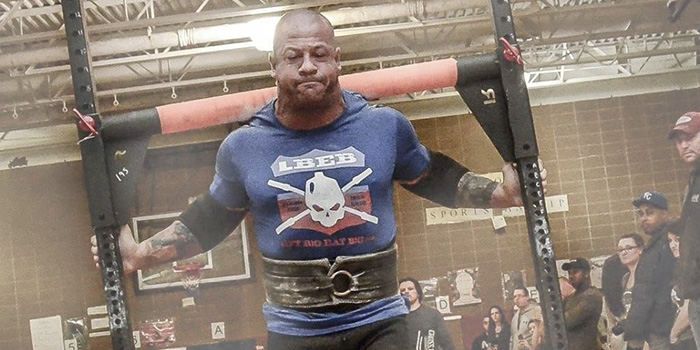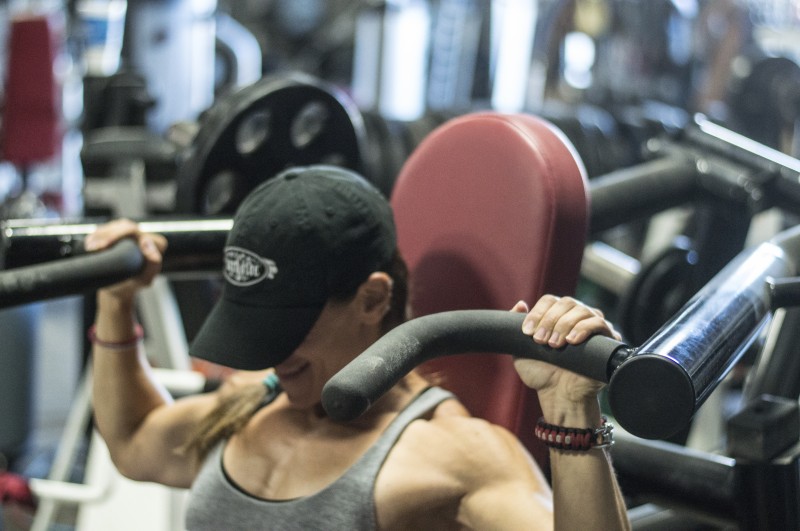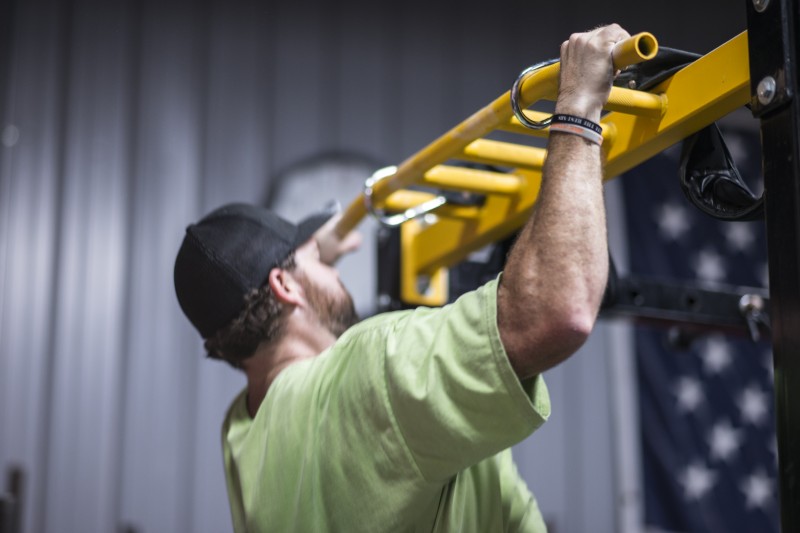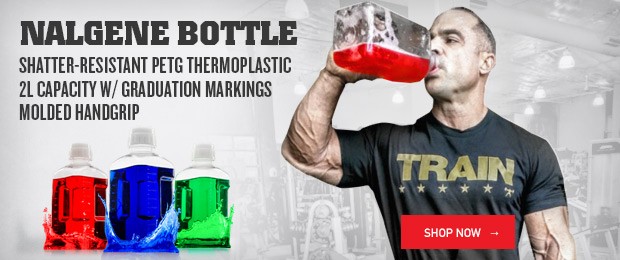
I’m a firm believer that every strength athlete needs to take an off-season each year. Heavy lifting year-round is a good way to get yourself hurt or, even worse, on the operating table. I’ve competed in both strongman and powerlifting back and forth for 10 years now, and an off-season is something I wish I would have started doing much sooner in my career. It’s easy to get swept up in competing constantly when you begin, as everything is new and you will greatly improve from each competition. Then, as we all know, the more advanced you become, the more progress slows down. This is when the real work begins.
I love competing, but I have slowed down quite a bit from when I first started. My first year I competed 10 times in both strongman and powerlifting, but now I keep it to three at the most to stay healthy as I get older. I started implementing an off-season program a few years ago with the goal of letting my joints heal and putting some quality muscle on. I know that after my last big competition of the year my joints are pretty beat up, and I’m sure most of yours are too. I also was coming off a pretty big weight cut where I would lose roughly 30 to 40 pounds, so I was definitely ready to pack on some mass. You also mentally need a break from always having a competition in mind and to just have fun training for a while.
RECENT: Extra Workout Bodybuilding-Style Lat Training for Strength Athletes
I’m going to outline an eight-week program that will accomplish all these things. One thing you will notice is that much of the compound work is done at the end of the workout. The reason for this is that you will be pumping a lot of blood into the muscles first with accessory work, and the weight will be less than what you can normally use. Your joints will thank you for this. Having the compound lifts towards the end is something I picked up from John Meadows, and it is how a lot of bodybuilders train to avoid injury.
The first week will be rough because you will not be used to the training program, but you will vastly improve by the end. Each week you are to increase the weight on each exercise by no more than 10 pounds. If you are not able to increase the weight (for example, if going up five pounds on dumbbells is too much to hit the same number of reps) then work on getting more reps then you did the week before. It’s totally okay to do 13 or 14 reps on an exercise if you were only able to get 12 at the same weight the week before. This is a very simple progression, but a lot of lifters forget how five more pounds or one more rep each week adds up over a long period. Also take note that when lifts have the same number (labeled 1a and 1b, for example), they are done as a superset.
Weeks 1-4
Day 1: Shoulders and Abs
- 1. Lateral Raises — 3 x 12; Do a few light warm-up sets to start, pause each rep at the top for one second, and do all three sets with the same working weight.
- 2. Barbell Front Raise — 3 x 12; Bring these slightly above your forehead and control slowly on the way down, don’t let the bar touch your legs, and keep tension.
- 3. Standing Log Strict Press or Multi-Grip Log Bar — Work up doing sets of 10 until you can no longer complete 10 reps. Make sure you get three challenging sets in, so don’t make big weight jumps. Weeks 3 and 4 make your last set for max reps, but don’t miss a rep!
- 4. Chest-Supported Rear Delt Raise — 4 x 15; On the last rep of each set do 10 partial reps from the bottom.
- 5a. Hanging Leg Raises — 4 x 15
- 5b. Rope Cable Crunch — 4 x 15
Day 2: Legs
- 1a. Hamstring Curls (Lying or Seated) — 4 x 12; Work up to a challenging weight of 12 reps and do all four sets with that weight.
- 1b. Leg Press — 4 x 20; Work up doing sets of 20 to get four tough sets. Supersetting this with hamstring curls should have your hamstrings on fire. Place your feet higher on the footplate for this.
- 2. SS Yoke Bar Box Squats — 3 x 10; Set the box just at parallel and really work on sitting back to take the stress off the knees. I always find my knees are pretty beat up after months of heavy yoke and farmers. Do sets of 10 working up to a challenging set. We’ll call it three working sets with the third being the heaviest. Again, on Week 3 and Week 4 go all-out for max reps on the last set.
- 3. Bulgarian Split Squat — 3 x 10; Hold dumbbells at your side if you can for these. For Week 3 and Week 4, add five partial reps at the bottom of each set.
- 4. Dumbbell RDL — 4 x 10; Nothing crazy on weight here, just get a good stretch. I also love these on the Pit Shark or a belt squat machine if you have access to one.
Day 3: Chest
- 1. Flat Dumbbell Press — Work up to a heavy set of 10, taking as many sets as you need to. Then immediately drop about 20% of the weight for max reps and then another 20% drop for one more set of max reps.
- 2. Two-Board Incline Bench Press — 4 x 12; You should be pretty smoked from dumbbell pressing so keep the weight the same for all four sets so the last set is a grinder. If you have the Super Shoulder Saver Bar it is ideal here.
- 3a. Decline Flyes — 3 x 15
- 3b. Band Pullaparts — 3 x Max Reps; Get somewhere around 20 or 30 reps.
- 4. Ring or Cambered Bar Push-Ups— 3 x Max Reps; If you are using rings, elevate your feet so you are parallel to the ground and get a good stretch in the pecs at the bottom. For the cambered bar, set it up in the bottom of a rack and go for a good stretch at the bottom.
Day 4: Deadlift/Back
- 1. Deadlift —3 x 10 with 65%; Dead stop each rep, control the eccentric down, and explode up. 65% is just the starting weight so make small jumps each week, but make sure you do not break form at all here.
- 2. T-Bar Row — 4 x 10; Stay low and keep these strict with no bouncing around. Work on engaging your lats. Do two sets narrow grip and two sets wide grip.
- 3. Monkey Bar Neutral Grip Pull-Ups— 6 x Max Reps; You’re going to do six total sets here. Start with the wider grip for two sets of max reps, then medium grip for two max sets, then narrow for two more max rep sets. If you really struggle on pull-ups then use a band to get at least 10 on your first set.
- 4. Straight Arm Lat Pulldowns — 3 x 15; Lean forward slightly, get a good stretch at the top, and contract hard at the bottom. Use a wide grip attachment. If you have a Tsunami Bar, it is my favorite to use here.
- 5. Dumbbell Shrugs — 3 x 10; Hold the top for three seconds on each rep. Use straps if you have to.
Day 5: Arms
- 1a. Seated Dumbbell or Fatbell Curls — 4 x 10; Keep these strict with palms up (supinated) at all times.
- 1b. Rope Pressdowns — 4 x 20; Squeeze and hold each rep at the bottom for a second.
- 2a. Single-Arm Dumbbell Preacher Curl — 3 x 12; You can do these standing up on an incline bench. Supinate hard at the top (turn your pinky up).
- 2b. Tate Press — 3 x 12
- 3a. Dumbbell or Fatbell Hammer Curls — 3 x 12
- 3b. JM Press — 3 x 12; These work great with the SS Yoke Bar if you have elbow issues.
I didn’t outline any rest periods here, but you definitely do not need to take any more than three minutes in between sets for the compound movements. The accessory movements should be 90 seconds max, and for the supersets you should try not to take much rest at all. You will be surprised how much just taking less rest can improve your conditioning. Look out next month for weeks five through eight!













2 Comments